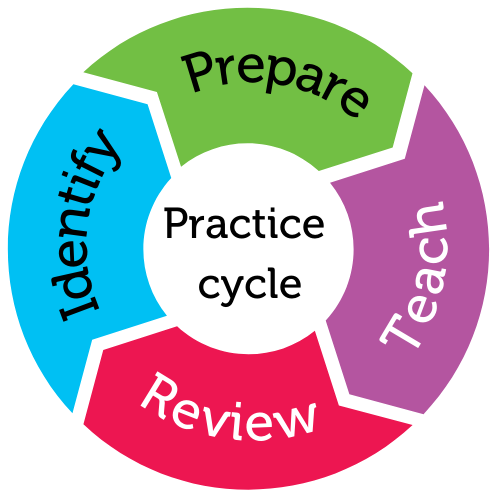
For student year
Helps students to
- feel supported
- be included
Helps teachers to
- understand the standards
- understand adjustments
Summary
This is the first in a two-part practice series about the Disability Standards for Education (DSE).
- Understanding the Disability Standards for Education I (this practice)
- The Disability Standards for Education II: Making reasonable adjustments
Are you aware of the Disability Discrimination Act 1992 or the Disability Standards for Education 2005?
These two pieces of Commonwealth legislation outline legal obligations to enable inclusion at your school and in your classroom.
This introductory practice presents these two pieces of legislation and will assist you to understand:
- educators obligations
- how direct and indirect discrimination may operate within schools
- harassment and victimisation
The content in this practice has been developed by Professor Elizabeth Dickson, an expert in education law.
The content presented in this practice is provided for information only. It does not constitute legal advice, nor is it intended to be a substitute for legal advice and should not be relied upon as such.
Preparing to teach
Before you start
Download and browse the Disability Standards for Education – this is a 28 page document.
The latest version can be downloaded from Australian Government Federal Register of Legislation.
Introduction to Discrimination Law and the Disability Standards for Education
Students with disability have a right to education on the same basis as students without disability. Sometimes students need to be treated differently in order to be treated equitably. The Commonwealth Disability Discrimination Act 1992, and the associated Disability Standards for Education 2005, prohibit schools from discriminating against students with disability and oblige schools to make reasonable adjustment for those students.
Discrimination
The first concept that needs to be understood is that discrimination against students with disability is prohibited. A failure to make reasonable adjustment may result in discrimination. While it’s often difficult to prove discrimination (for a variety of reasons), students can and do sue schools if they believe their treatment is discriminatory.
There are two kinds of discrimination:
- Direct
- Indirect
Direct discrimination is when a disabled person is treated unfairly because of their disability. An example would be refusing enrolment to a student with disability.
Indirect discrimination is when a rule or requirement that applies to everybody unfairly disadvantages people who are disabled. An example would be if a person is required to do something that they cannot do because of their disability, or they miss out on participating fully in an activity because reasonable adjustments have not been made.
Harassment and victimisation
Schools have an obligation to prevent the harassment and victimisation of students with disability. They must take positive steps to prevent it, and respond to it promptly and fairly if it does occur.
Definitions
- Harassment is an action taken that is reasonably likely, in all the circumstances, to humiliate, offend, intimidate or distress the person
- Victimisation is subjecting a person to a detriment because they have sued/intend to sue or give evidence
Reflection questions:
- What steps could you take to promote the message that students (with disability) must not be harassed?
- What would you do if you witnessed the harassment of a student with disability?
Video 3: A grand entrance but not for all.
Duration: 04:05
Reflection task
After reviewing the videos and listening to the stories consider the following reflection questions:
- Can you think of examples of direct discrimination and indirect discrimination affecting a student with disability that might arise at your school?
- Can you think of examples of adjustments that might be made for a student with disability inside the classroom and outside the classroom at your school?
- Who would you talk to at your school if you weren’t sure what processes were in place to support students with disabilities?
- What additional actions would you recommend your school takes to ensure all students can participate on the same basis as one another?
Practice toolkit
Practice implementation planner template
We know it's not always easy to keep track of what's working and what isn't. So, we've created this template for you to record and reflect on what you're doing to create more inclusive classrooms. The implementation planner contains:
- guidance around goal setting
- a reflection section (what worked, didn’t work, what to change, and next steps)
- prompting questions.
Implementation planner with examples
Set your professional learning goal for:
Understanding the Disability Standards I
Benefits of goal setting
Setting, working towards, and reflecting on goals helps you grow professionally and improve your practice. You can access AITSL learning resources for teachers to learn more about:How to set goals
The Australian Institute for Teaching and School Leadership recommends using the SMART matrix to frame your goal setting.SMART goals refers to goals that are:
- Specific
- Measurable
- Achievable
- Relevant
- Time-phased
Resources
2020 Review Summary Document
2020 Review of the Disability Standards for Education 2005
Fact sheet 1: Disability Discrimination Act 1992
Disability Standards for Education 2005
Fact sheet 2: Disability Standards for Education 2005
Disability Standards for Education 2005
Fact sheet 3: Parental engagement
Disability Standards for Education 2005
Fact sheet 4: Effective consultation
Disability Standards for Education 2005
Fact sheet 5: Complaints processes
Disability Standards for Education 2005
Exemplars of Practice
Disability Standards for Education 2005
Related Practices

The Disability Standards for Education II: Making reasonable adjustments
TEACHING PRACTICE
For student years
Helps students to
- feel included
- be supported
Learning Cycle
